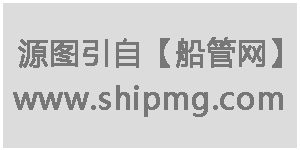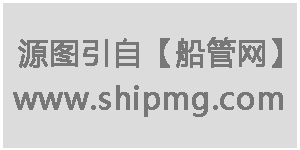【免费使用】点击查看详情
2018年8月1日巴黎和东京备忘录发布了开展以MARPOL附则VI为主题的CIC(集中检查大会战),主要是核实船舶对MARPOL附则VI的符合情况,如违反规定,不仅会被开具缺陷,甚至可能导致滞留或罚款。因此,建议各船公司和船舶认真对待。
时间:2018.9.1至2018.11.30
此次CIC问卷包括11个问题,有效问题10个,相关内容如下。
通知内容:

LAUNCH OF JOINT CONCENTRATED INSPECTION CAMPAIGN ON MARPOL Annex VI
The Maritime Authorities of the Tokyo and the Paris Memoranda of Understanding (MoU) on Port State Control will launch a joint Concentrated Inspection Campaign (CIC) on MARPOL Annex VI.
The main objectives of this CIC are to:
• establish the level of compliance with the requirements of MARPOL Annex VI within the shipping industry;
• create awareness amongst ships’ crew and ship owners with regard to the importance of compliance with the provisions of MARPOL Annex VI and the prevention of air pollution;
• send a signal to the industry that prevention of air pollution and enforcement of compliance with applicable requirements is high on the agenda of both MoU member States; and
• underline the responsibility of the Port State Control regime with regards to harmonised enforcement of compliance with the requirements of MARPOL Annex VI, thus improving the level of compliance and ensuring a level playing field.
This inspection campaign will be held for three months, commencing from 1 September 2018 and ending 30 November 2018. A ship will be subject to one inspection under this CIC during the period of the campaign.
Port State Control Officers (PSCOs) will use a list of 11 questions to assure that equipment carried onboard complies with the relevant statutory certificates, the master and officers are qualified and familiar with operations and that equipment is properly maintained and functioning.
Air pollution from ships contributes to overall air quality problems in many areas and affects the natural environment. Pollution by sulphur and nitrogen oxides contributes to acid rain, increased eutrophication and reduced air quality.
Following international co-operation in the combat against acid rain and ozone- depleting substances, the IMO, through the MEPC, included the issue of air pollution in its work programme. As a result of the work, through the Protocol of 1997, Annex VI has been included in the MARPOL Convention. MARPOL Annex VI sets limits on sulphur- and nitrogen oxide emissions from ship exhausts and prohibits deliberate emissions of ozone-depleting substances and volatile organic compounds.
Both Secretary Hideo Kubota and Secretary General Richard Schiferli state: “Effective and uniform enforcement is a prerequisite for ensuring cleaner air and the full environmental impact of the regulation. In practice, this requires a high priority on enforcement and strong and effective cooperation between national port State control authorities”.
If deficiencies are found, actions by the port State may vary from recording a deficiency and instructing the master to rectify it within a certain period of time to detaining the ship until the serious deficiencies have been rectified. In the case of detention, publication in the monthly detention lists of the Tokyo and Paris MoU web sites will take place.
It is expected that the Tokyo and Paris MoUs will carry out approximately 10,000 inspections during the CIC.
The results of the campaign will be analysed and findings will be presented to the governing bodies of the MoUs for submission to the IMO.
可访问东京备忘录网站下载原文
本次CIC问卷包含的11个问题

问题解读如下:(以英文为准)
问题1
Are bunker delivery notes, with details of fuel oil for combustion purposes, kept available on board for the required period of 3 years?
包含燃油详细信息的船用燃油交付单是否按要求在船保存3年?
MARPOL附则VI第18.6条规定:燃油交付单在船上的存放位置应易于在任何合理时间随时可供检查,并应在燃油交付船上之后保存三年。
对于这个问题,通常船舶都能按要求保存燃油交付单(BDN),船舶只要按要求保存并随时可查,格式符合要求就行。
问题2
Do bunker delivery notes indicate that fuel oils delivered and used on board is not exceeding the maximum allowed sulphur content, as appropriate?
燃油交付单是否表明交付使用的燃油硫含量没有超过允许的最大值?
MARPOL附则VI第14条规定,船上使用的任何燃油的硫含量不应超过3.5% m/m;在硫氧化物控制区内,使用的燃油的硫含量不应超过0.1% m/m。
对于燃油交付单中标明的硫含量正常都是符合要求的,但是要注意不要与以前不符合标准的燃油混合,并且也有可能因船员操作不当引起硫含量超标。参考文章:低硫油的硫含量怎么会超标?
问题3
Do ships which are using separate fuel oils to comply with the maximum sulphur content of 0.10% m/m in fuel oil while operating in SOx emission control areas, have a written procedure showing how fuel oil change-over is to be done for achieving compliance with the above requirements when entering SOx emission control areas?
在硫化物排放控制区域,使用符合硫含量不超过1% m/m的燃油时,是否有书面程序记录在进入排放控制区时如何换油?
附则VI第14.6条规定,使用含硫量超过0.1% m/m的燃油进入或离开硫氧化物排放控制区域的船舶,应携有一份书面程序表明燃油转换如何完成,在其进入排放控制区域之前规定足够的时间对燃油供给系统进行全面冲洗,以去除所有硫含量超过本条4所规定的适用硫含量的所有燃油燃料。在燃油转换作业进入排放控制区域以前完成或离开该区域后开始时,应将每一燃油舱中的低硫燃油的容积以及日期、时间及船舶位置记录在主管机关规定的航海日志中。
实际上这就是指船上的换油程序,当船舶需通过换油以满足排放控制区的排放要求时,船上应保存书面的换油程序,按照该程序的要求转换燃油,做好相关记录,并且同时航海日志中也要记录。
问题4
Are alternative arrangements, (e.g. scrubbers) installed on board according to regulation 4.1 approved by the flag State?
根据第4.1条的规定,安装在船的替代装置(如洗涤器)是否经船旗国批准?
附则VI第4.1条规定,缔约国主管机关可允许在船上安装任何装置、材料、设备或器具,或允许使用其他程序、替代燃油、或符合方法,以代替本附则所要求者,条件是这种装置、材料、设备或器具或其他程序、替代燃油、或符合方法与本附则,包括第13和14条所述的任何标准,对减排方面所要求者至少同等有效。
本问题涉及NOx和SOx排放的替代装置的认可。为满足附则VI要求的NOx和SOx排放标准,船舶可以安装替代装置,如洗涤器,但应经船旗国认可,并在IAPP证书附录——结构和设备纪录的第2.3.1.2、2.3.2.2和2.6项予以注明。
问题5
Do ships which are using separate fuel oils to comply with the maximum sulphur content of 0.1% m/m in fuel oil and entering or leaving SOx emission control areas, record detailed information showing that the ship has completed/initiated the change-over in the logbook prescribed by the Administration?
进出排放控制区时的换油详细信息是否在航海日志中记录完整?
附则VI第14.6条规定,在燃油转换作业进入排放控制区域以前完成或离开该区域后开始时,应将每一燃油舱中的低硫燃油的容积以及日期、时间及船舶位置记录在主管机关规定的航海日志中。。
船舶应存有足够数量的低硫油,在进入SOx排放控制区前,应按照换油程序完成高硫油到低硫油的转换,并确保高硫油已被冲刷干净;离开该区域后再开始低硫油到高硫油的转换,并在航海日志中做好相应记录。船舶如在航海日志和轮机日志都记载了换油信息,这些信息如船位应保持一致。
问题6
Do ships which have rechargeable systems containing ozone-depleting substances (refer to the supplement to the IAPP Certificate, item 2.1), have the ozone-depleting substances record book maintaine
装有含消耗臭氧物质(ODS)的可再充装系统的船舶(参考IAPP证书附录的第2.1项),是否持有消耗臭氧层物质记录簿?
附则VI第12.6条规定,拥有含消耗臭氧物质的可重新充注系统的受第6.1条约束的每艘船舶应保存一份《消耗臭氧物质记录簿》。经主管机关批准,该记录簿可以是现有航海日志或电子记录系统的一部分。
目前很多新船的制冷设备所用的冷剂为非消耗臭氧物质,这时,船舶不需要持有消耗臭氧物质记录簿。如船舶所装制冷设备(空调压缩机、伙食冰机等)使用ODS(氟利昂12、22等)作为冷剂,应持有消耗臭氧物质记录簿,并按照附则VI的12.7条的要求做好ODS的填充、含ODS设备的维护保养、ODS的故意/非故意排放、ODS排入接收设备、以及ODS供应等记录。而且IAPP证书附录的2.1项应列明船上含消耗臭氧物质设备的名称、位置和所用物质的类别。
对于无法再冲装消耗臭氧物质的设备,如船上冰箱,不需要在IAPP证书中列明。但如该设备排入接受设备,应在ODS记录簿中应予以记录。
有些船舶在IAPP证书检验后又安装了含ODS的空调,因空调含有可再冲装冷剂的接头,也应在IAPP证书登记。
问题7
Where an Approved Method in accordance with Annex VI, regulations 13.7.1-13.7.5 (refer to the supplement to the IAPP Certificate, item 2.2.1) is installed, has such an installation been confirmed by a survey using the verification procedure specified in the Approved Method File, including appropriate notation on the ship’s International Air Pollution Prevention Certificate of the presence of the Approved Method?
如根据附则VI第13.7.1-13.7.5条(参见IAPP证书附录2.2.1)安装了一个认可方法,这样的安装是否使用由认可方法文件规定的验证程序进行检验确认,包括在IAPP证书中适当的标志该认可方法?
见附则VI第13.7.1-13.7.5条。第13.7条规定, 对于在1990年1月1日或以后但在2000年1月1日以前建造的船舶上安装的输出功率超过5,000 kW、每缸排量在90升或以上的船用柴油机,其《国际防止空气污染证书》应表明:
.1 认可方法已经应用;
.2 柴油机已发证;
.3 认可方法尚未商用;
.4 认可方法不可得。
本问题涉及对1990年1月1日或以后但在2000年1月1日以前建造的船舶上安装的输出功率超过5000 kW、每缸排量在90升或以上的船用柴油机的认可方法的验证。这些柴油机应满足Tier I的要求。
对于本问题涉及的船舶,应在IAPP证书附录的第2.2.1项做出相应标记,表明本轮受附则VI控制的柴油机的认可方法已安装、或尚未商用、或不可得。
问题8
For ships equipped with a shipboard incinerator or thermal waste treatment device installed as an alternative arrangement, is the ship’s crew responsible for the operation of the equipment familiar with, properly trained in, and capable of implementing the guidance provided in the manufacturer’s operating manual?
对于配备了船用焚烧炉或作为一种替代安排热废物处理装置的船舶,负责设备操作的船员是否是否熟悉设备操作,接受了适当的培训,并能够执行制造商操作手册中提供的指导?
附则VI第16.8条规定,应对负责焚烧炉操作的人员进行培训,使其能执行制造厂操作手册中规定的指导。
本问题涉及焚烧炉的操作和负责操作人员的培训。船上焚烧炉应持有一份制造厂的操作手册,责任船员还应接受相应培训,熟悉焚烧炉的操作,应清楚哪些物质不能在焚烧炉内燃烧。检查时,PSC检查官可能要求责任船员测试焚烧炉,此时,责任船员应能按照说明书的要求操作焚烧炉,且焚烧炉各项工况正常。
问题9
Are the master and crew familiar with essential shipboard procedures in the approved VOC Management Plan relating to the prevention of air pollution from ships?
船长和船员是否熟悉经批准的VOC管理计划中涉及防止船舶空气污染的基本船上程序?
附则VI第15.6条规定,载运原油的液货船应备有并实施经主管机关认可的VOC管理计划。
本问题涉及油船(载运原油)的VOC管理计划。船上应该持有该计划,计划由船舶工作语言写成(应包括英语、法语,西班牙语的一种),并经主管机关认可。责任船员以及货物操作涉及的船员应熟悉该计划规定的操作程序。
问题10
Does the ship keep on board a Ship Energy Efficiency Management Plan (SEEMP)?
船舶是否持有船舶能效管理计划(SEEMP)?
附则VI第22.1条规定,每艘船舶(400总吨及以上)应在船上保存一份具体的船舶能效管理计 (SEEMP)。该计划可为船舶安全管理体系的一部分。
本问题涉及SEEMP的在船保存。400总吨及以上的船舶应持有SEEMP,该计划用船舶工作语言写成,可以是安全管理体系的一部分。
问题11
Has the ship been detained as a result of the Inspection Campaign?
船舶是否因CIC被滞留?
相关建议
1.提前举行培训:公司收集CIC相关信息,提前开展相关培训,使船员熟悉本次CIC要求。
2.及时开展自查:船员针对CIC检查问卷,及时进行自查,确保证书、文书以及记录符合要求,责任船员熟悉操作。包括但不限于:
证书(IAPP、EIAPP);
文书和记录(发动机技术案卷和参数记录簿、油类记录簿、航海日志、BDN、换油程序、ODS记录簿、SEEMP、焚烧炉使用培训记录、VOC管理计划(如有));
设备操作;
油样。
3.熟悉地方立法:跟踪了解船舶可能挂靠的港口国在防止空气污染方面的最新规定,并将其及时通报船长和船员。例如,除附则VI规定的排放控制区外,中国、美国、欧盟还通过国内立法的形式确定了排放控制区,船舶在这些区域航行作业时应遵守该区域的排放规定。
内容摘自:蓝盾安检工作室 和TMOU





































